
We kindly inform you that, as long as the subject affiliation of our 300.000+ articles is in progress, you might get unsufficient or no results on your third level or second level search. In this case, please broaden your search criteria.

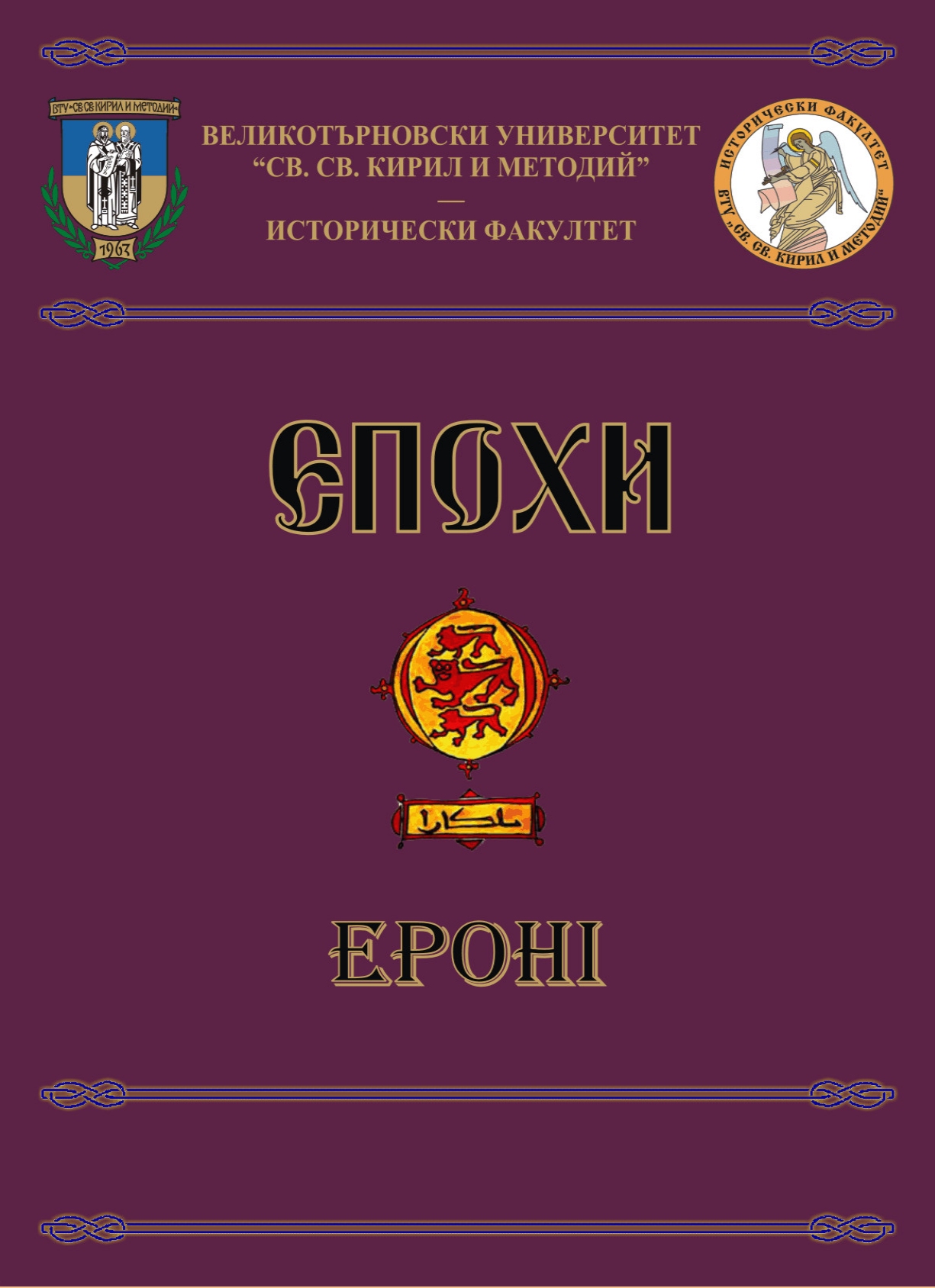
The aim of the present article is to analyze the ideas promoted into the programmes of the political parties to repudiate the political and economic restrictions imposed on the Principality of Bulgaria under the Berlin Treaty. Although the ideologists and the leaders of the bourgeois parties did not work out in detail specific resolutions to gradually deprive the foreign subjects of their privileges, the programme documents gradually and more and more emphatically propounded the demand to repudiate the political and economic dependence imposed by the Berlin Treaty. With their practical actions the governments, and in particular those of the People’s Liberal Party and of the People’s Party, contributed to the de facto annulment of the capitulation regime, and paved the way for the recognition by Turkey and the Great Powers of the independence of the Bulgarian State, which was declared on 22 September 1908.
More...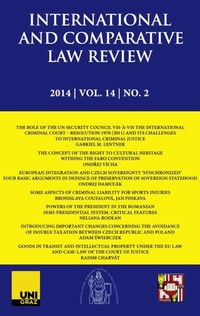
Most countries in Africa are both “multination” and “polyethnic” states. This is due partly to the forced amalgamation, by the European colonialists, of the continent’s “ethnocultural nations” into single economic and political units that were called “colonies.” These colonies eventually evolved into what are today’s independent African countries. Today, many of these ethnocultural groups want to secede and form their own independent polities in order to have more autonomy over policies that affect their well-being, including especially their cultural and traditional values. The struggle by these groups for either outright secession or so-called enhanced rights has created many challenges for governance, national integration and nation-building in many countries in Africa today. Throughout the continent, inter-ethnic conflict, for example, over the allocation of scarce resources, has produced sectarian violence that has led to civil wars (as occurred in Liberia, Sierra Leone, Rwanda, and Nigeria) and significantly endangered prospects for peaceful coexistence. It has been suggested that the solution to this political quagmire is the creation of differentiated citizenship rights for each of these groups. The paper suggests that of the three types of differentiated citizenship that have been suggested as a way to accommodate diversity—self-government rights, polyethnic rights, and special representation rights—self-government rights pose the greatest threat to social, political, and economic stability in the African countries. The solution to this governance challenge may lie in inclusive and robust dialogue, which can help these groups find a way to remain citizens of their present polities, while at the same time, retaining their cultural identities.
More...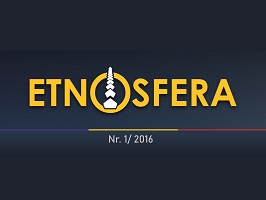
Sesiunea Națională de comunicări Științifice "Românii din Sud Estul Transilvaniei. Istoric. Cultură. Civilizație" organizată de Centrul Ecleziastic de Documentare "Mitropolit Nicolae Colan", din cadrul Episcopiei Ortodoxe a Covasnei și Harghitei, Muzeul Național al Carpațiilor Răsăriteni, Centrul European de Studii Covasna și Harghita, Ministerul Culturii, Liga Cultural Creștină "Andrei-Șaguna" și Centrul Cultural Toplița, cu sprijinul Consiliului Județean Covasna, a Consiliului Local Sf. Gheorghe și al S.C Stefadina Comserv Srl București, începând din anul 1995 a devenit o manifestare recunoscută pentru valoarea contribuțiilor din domeniul cercetării istoriei, culturiiși civilizației românești din Sud-estul Transilvaniei. Ajunsă la ediția a XIX-a, sesiunea s-a impustreptat ca una dintre activitățiile științifice cu impact social și cultural semnificativ la nivel local, regional și național.
More...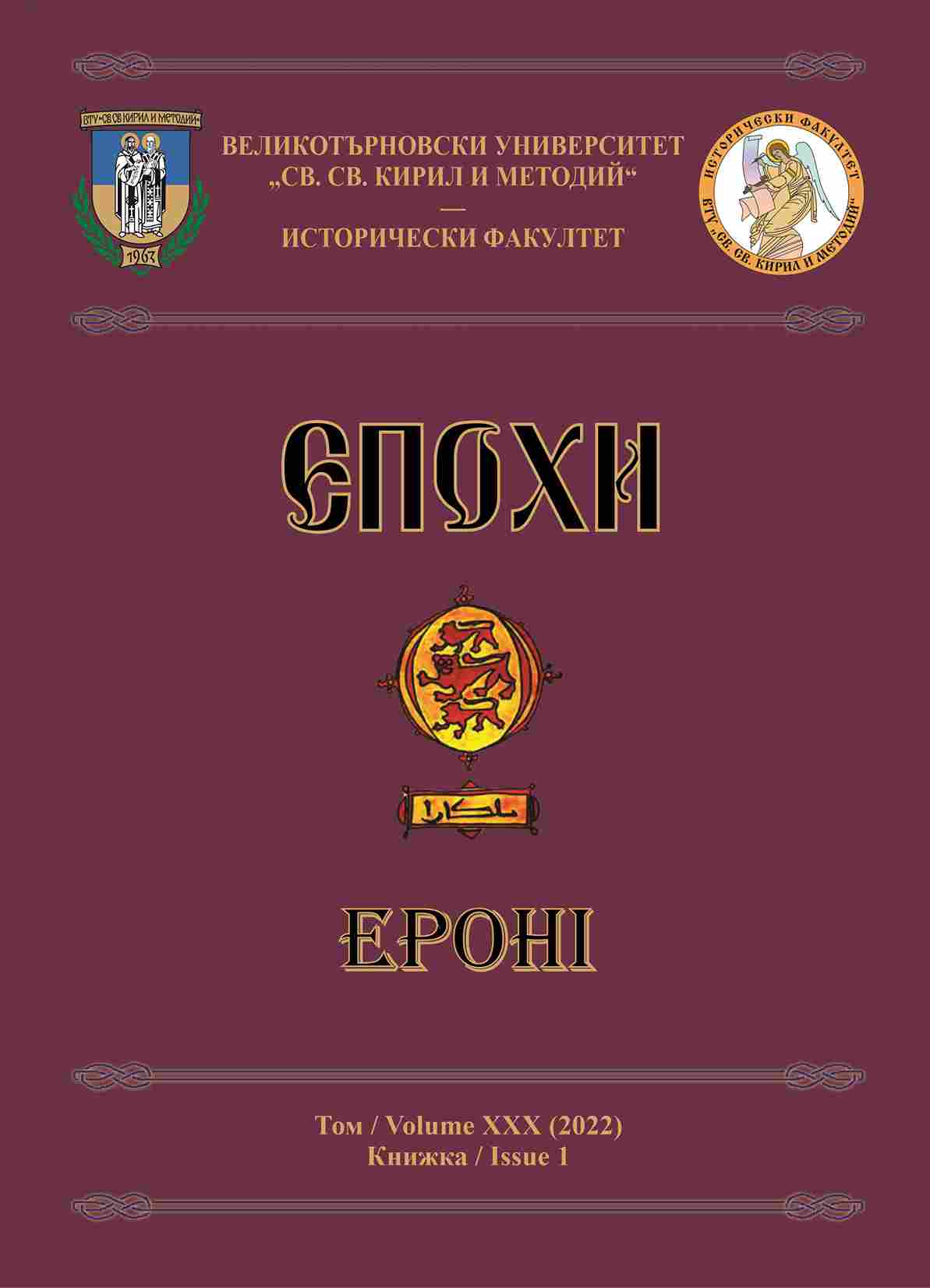
One of the unique features of the Roman state-political model is the ability of Roman elites to integrate those of the conquered into their political, military, and social structures. This practice was unique for ancient societies and states, which, by conquering a territory, turn the conquered into a secondary social and economic factor that has no access to political and military power. The history of Rome is an example of how to build a powerful state through the constant gradual integration of conquered elites into institutions of power. The analysis of the policy pursued by the ruling Roman elite in relation to those conquered by the Romans shows that, over the centuries, they have followed the same political practice with varying intensity and some fluctuation. Roman history shows that, after a period of fierce military expansion and forcible subjugation, the Romans gradually shifted to a policy of integration, which in most cases was expressed in the gradual inclusion of local elites in the traditional Roman patron-client relations, and through them their involvement in Roman administrative and military institutions. After moving to live permanently in Rome, the most ambitious and intelligent representatives of these local elites gained access to Roman magistrates, and some of them even reached the highest Roman magistracies. In many cases, they even became one of the most influential politicians in ancient Rome during their time.
More...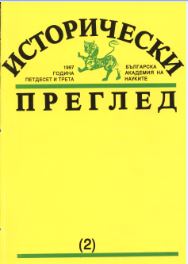
Although the memoir of Alexander Exarch is known to Bulgarian historians, it has not been printed in full. The authoress interprets the Memoir which in point of fact was a political declaration of the Bulgarian political centre in Paris in the early 1840s. It clearly defined the ways in which the all-Bulgarian movement for spiritual and political development should be realized. The memoir gives also a clear idea of its author, Alexander Exarch, one of the most active champions of the cause of Bulgaria’s liberation in the middle of the past century.
More...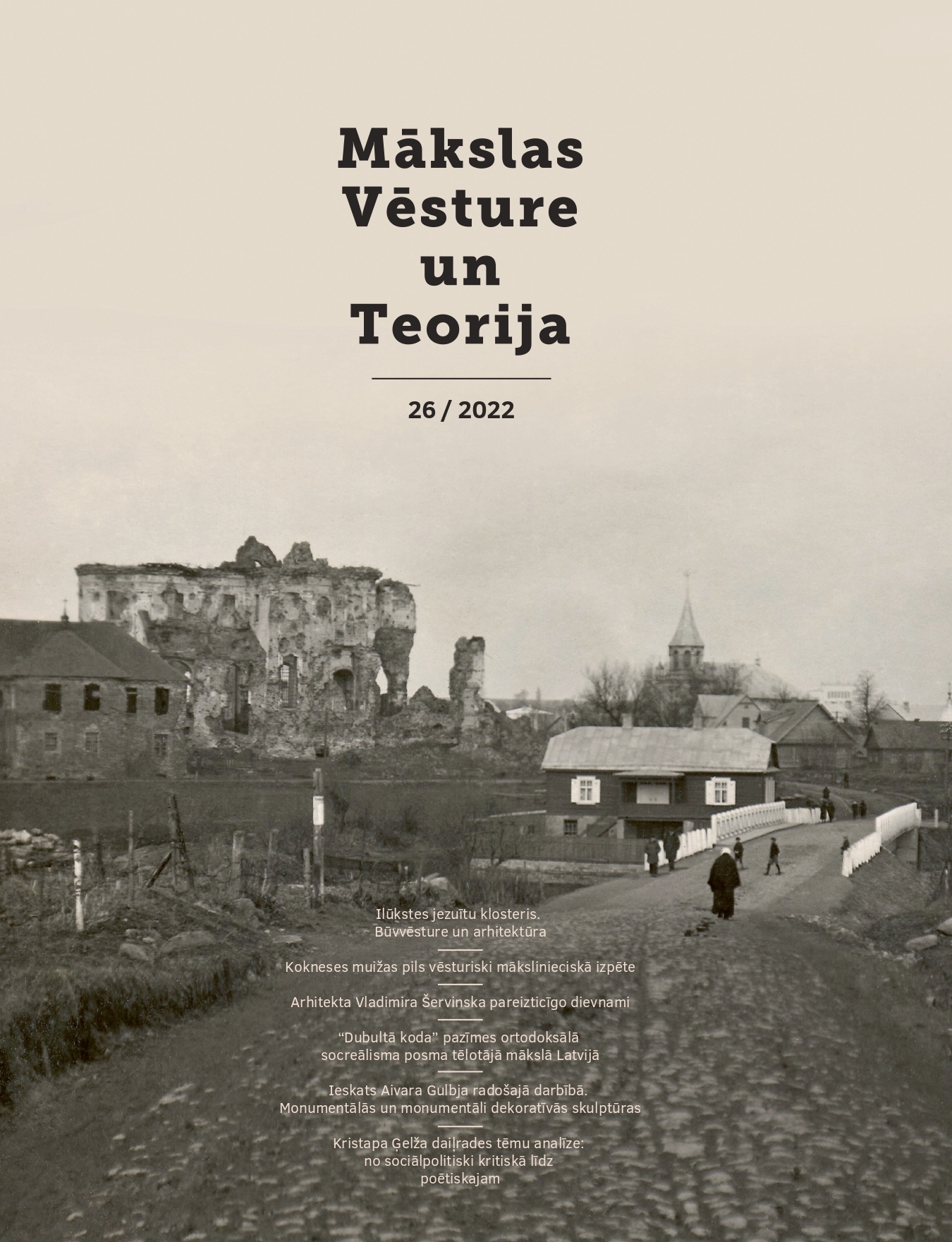
The goal of this article is an in-depth analysis of subject matter in Kristaps Ģelzis’s (1962) oeuvre, attempting to specify important trajectories in the artist’s development. Ģelzis is considered a master of Latvian contemporary art whose career dates back to the 1980s. He has participated in both local and international exhibitions. Ģelzis is one of the so-called trespassers’ generation of artists along with Oļegs Tillbergs (1956), Ojārs Pētersons (1956), Sarmīte Māliņa (1960), Andris Breže (1958) and others known for their different artistic means of expression and broadening the concept of art in Latvia. Ģelzis also belongs to the so-called first generation of conceptualists whose manifestations were characterised by expansive and imaginative installations, large-scale serigraphs as well as meticulously refined procedural works. The range of media used by Ģelzis is almost unlimited. He expresses himself in any available material or medium; what matters is that the specific medium resonates with and executes the artist’s sharp-eyed and typically witty insights. Therefore, this article focuses on the growing significance of the content-based dimension of Ģelzis’s work, which is becoming a major point of reference for any analysis of specific stages of his oeuvre, placing thematic analysis centre stage.Assessing Ģelzis’s oeuvre over time, one must conclude that socio-political critique thematically prevails. In the context of Latvian contemporary art, Ģelzis is among the few whose artistic output is also notable for a sharp, candid, ironic and critical reaction to the events of the day in both local and international contexts. Ģelzis utilises individual history and experience (the environment, state, political events and consequences arising from systemic changes) to introduce his observations and to speak candidly and ironically about the nature of socio-political transformations and their impact on society. He possesses a sensitive command of symbolic elements of the local environment, which he masterfully integrates into his works, reflecting on the societal issues of the day. Oftentimes, Ģelzis’s works are characterised by the presence of humour and paradox in which the observation or image of a specific event fit into the broader logic of events.In the late 1980s and early 1990s, it was criticism of the Soviet apparatus, the relationship between the individual and authority with its ideological manifestations in the context of current socio-political events and changes (“Above I”, “Above II”, “Aggression”, all 1987; “Fall”, “Dismantling the Wall”, both 1988; “Laundry Day”, 1990). During his career, Ģelzis has focused in-depth on the relationship between authority and control (“Monument”, 2009, “Once Again Nothing’s Happening”, 2010). During the 1990s transition from the socialist system to the transnational capitalist society, criticism of capitalism and consumer society began to appear in Ģelzis’s works, manifested through his use of global pop culture images, along with criticism of brands (“The Stuffed Free Potato Eater”, 1997; the “Mask” series, 2001–2002; “Mrs Smith’s DNA”, “Britney’s Strings”, both 2007). Thereafter, he created critically-oriented, symbolic references to domestic and international political events in various media (“Fire Centre”, “Swedish Buffet”, both 1997; “Bin Fear”, 2007; “Sand Castle”, 2012), paying particularly critical attention to issues of Latvian national identity and the concept of statehood (“What’s Happening in Latvia”, 2005; “Flag”, 2013; “Anthem”, 2015). The artist was also preoccupied with ecological crises and environmental problems (“Shoots”, 1987; “Eco Yard 2000”, 1994–2004; “Countryside LV” and “Countryside U.S.”, 2000; “Plastic Coffee”, 2007; “The Run for a Million”, 2008).Ģelzis’s art should not just be considered in the context of socio-political references. At the start of the 1990s, before turning to the societal impacts of pop arty kitsch, the artist created formally laconic objects and installations in a style reminiscent of minimalism, which were more centred on the work of art itself, examining its nature and the mechanisms of perception (“Three Graces”, 1990; “Language Lesson”, “Power Box”, “Structure”, all 1992; “Twin Elements”, 1994). His work “Dream Journey” (1994) is notable for the interplay between language and form typical of a linguistic conceptualist. A subject of particular importance to Ģelzis (especially during the period when he had to divide his attention between his artist’s career and job in an advertising agency), concerned the artist’s role in society (“Nothing Personal”, “Personal Cube (Parade Self-Portrait)”, both 2001; “One Hundred Years”, 2005; “Art Police”, 2010), which he often examined using his own self-image. In contrast, Ģelzis’s Venice Biennale exhibition “Artificial Peace” (2011), which contemplated the relationship between contemporary monumental painting and landscape, was distinctly poetic.Reflecting upon Ģelzis’s body-of-work, one deduces that it is challenging to systematize the artist’s oeuvre according to specific media or thematic developments, because he works in an extremely furcated manner. He uses the most eclectic media including graphic art, painting, installation, video, digital print, and found art among others, because what matters most is a credible execution of the idea in his mind. In the context of Latvian art, Ģelzis’s postulation stands out through the fact that in his installations, large watercolours, found objects, video works and sheet paintings, he continually talks about the events of his time, stating his position on issues of relevance to the state and the public, at the same time concentrating his attention on the artworks’ form and the idiosyncrasies of perception. Ģelzis is a sensitive observer, who finds an infinite source of new ideas for execution in the public and social space, often toying with the aspects of socio-political critique. He combines the completeness of the crafted work of art with unexpected, ironic and thought-provoking interpretations of domestic and global aspects of socio-political events. In Ģelzis’s oeuvre, one can discern certain subjects that change over time or interact, which the artist has been interested in throughout his career: the relationship between the individual and authority, interest in environmental issues, depiction of topical socio-political events, criticism of global pop culture, as well as interest in the mechanisms of perception and the artist’s role in society. It would be valuable to prepare a comprehensive and analytical description of Ģelzis’s oeuvre, including the artist’s biography, a list of his exhibitions, as well as focusing in-depth on specific aspects of his work. Likewise, an all-encompassing exhibition of Ģelzis’s works would provide the opportunity to view and contextualise the oeuvre of this major Latvian contemporary artist from the 1980s through to the present day.
More...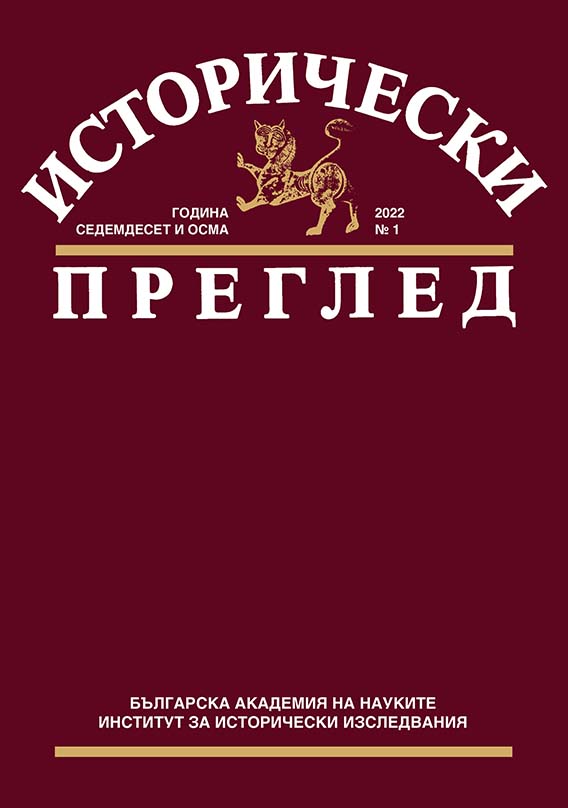
The article examines the death of Damyan (Dame) Gruev – one of the founders of the IMERO (Internal Macedonian-Edirne Revolutionary Organization) and its main leader. His assassination in December 1906 is presented not only as an accidental act. Gruev’s death was partly a result of the large-scale measures taken by Ottoman authorities, aided by Serbian diplomats in Ottoman Macedonia, as well as the deep crisis and division in the IMERO.
More...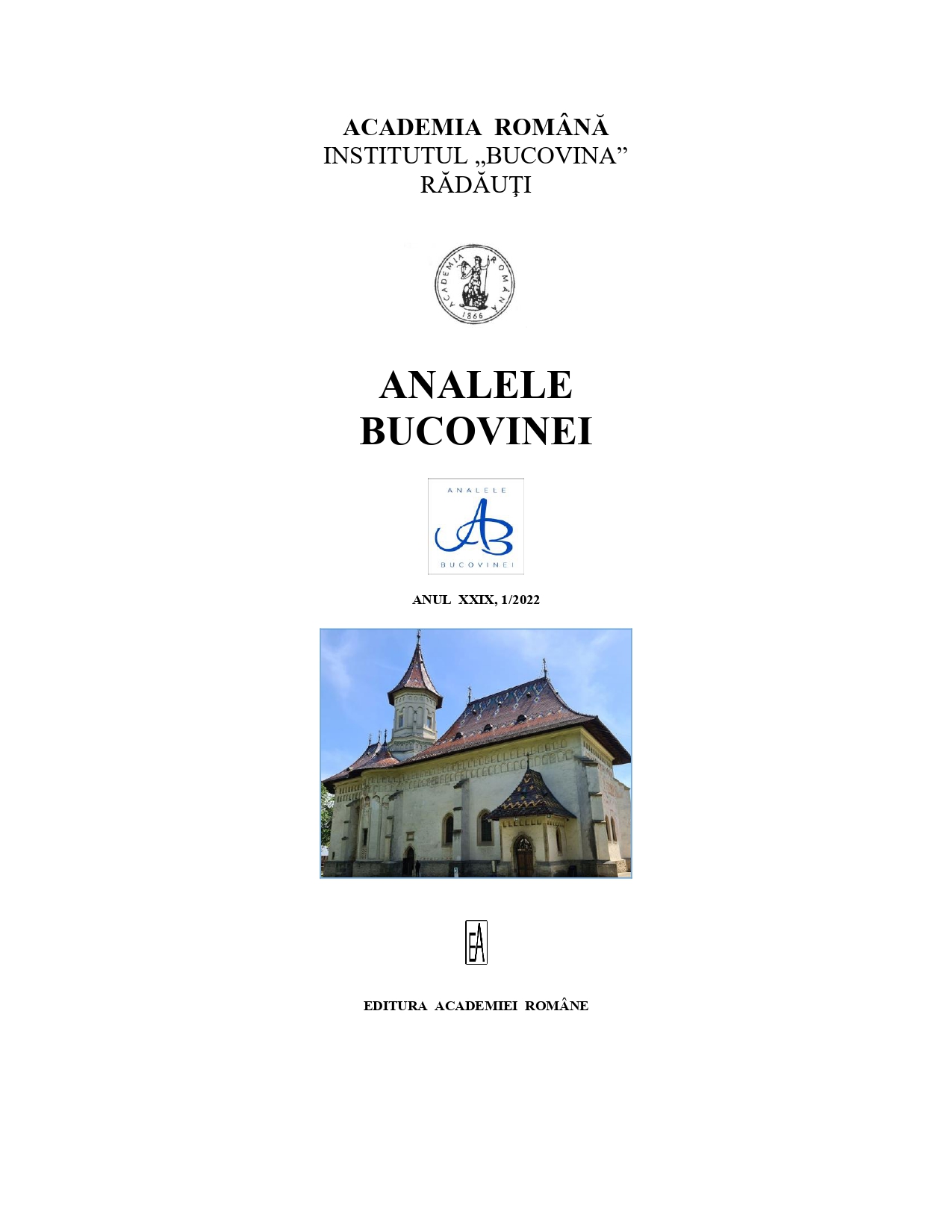
At the beginning of the foreign rule, Bukovina had a population of approx. 67–73 thousand people, and Bessarabia – at least 300 thousand inhabitants. Most of the inhabitants were Romanians (Moldovans), both in Bukovina (about 59–60% in 1774) and in Bessarabia (about 75–76% in 1812). In both provinces, the most massive migration processes took place in the first decades of the foreign administration (in Bukovina – until the 1920s and 1930s, in Bessarabia – until the middle of the 19th century). In 12 years, the number of inhabitants almost doubled in Bukovina (from 67–73 thousand people in 1774, to about 135 thousand people in 1786) and Bessarabia (from at least 300 thousand in 1812, to approximately 583 thousand in 1824). Subsequently, the migration processes decreased in intensity, and the number of inhabitants increased due to the natural growth.In the first years of the Russian rule, simultaneously with the relocation of the wandering peasants from across the Dniester to Bessarabia, there was a reverse process of refuge of Moldovan peasants in Moldova west of the Prut. Similar processes took place in the first years of Austrian rule also in Bukovina, when many Romanian peasants fled to Moldova. In the first decades of foreign rule, most foreign immigrants arrived in both Bukovina and Bessarabia, mainly Ukrainians from the north and east of the Dniester. As a result, it was during this period that the ethnic structure of the population in both provinces changed radically, to the detriment of the local Romanian population. Towards the middle of the 19th century, Bukovina was populated by approximately 380 thousand inhabitants, including 48.5% Romanians, and in Bessarabia, the proportion of Moldovans was reduced to approx. 52–56% (in the years 1850–1862).
More...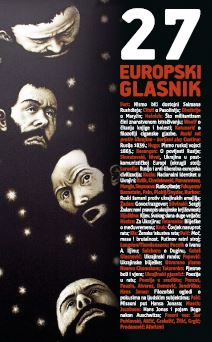
Pisanje povijesti izravno utječe na nacionalne identitete. A to je posebno Istaknuto kad vidimo kako se pisanje i tumačenje povijesti osporava kod tri istočnoslavenska naroda (Rusi, Ukrajinci i Bjelorusi). Kad je osporavanje vrlo naglašeno, kao u ukrajinsko- ruskim odnosima Nakon raspada SSSR-a, pisanje i tumačenje povijesti također utječe na njihovu unutrašnju i vanjsku politiku i, što je posebno važno, na njihove međudržavne odnose. Za rusku elitu, kao i za većinu Rusa, Ukrajina i Bjelorusija nisu »strane « zemlje.
More...
Excerpts from discussions between Alexander Arhangelskii, Adam Michnik, Georges Nivat, Bohdan Osadchuk, Miroslav Popovič, Konstantin Sigov and Roman Szporluk.
More...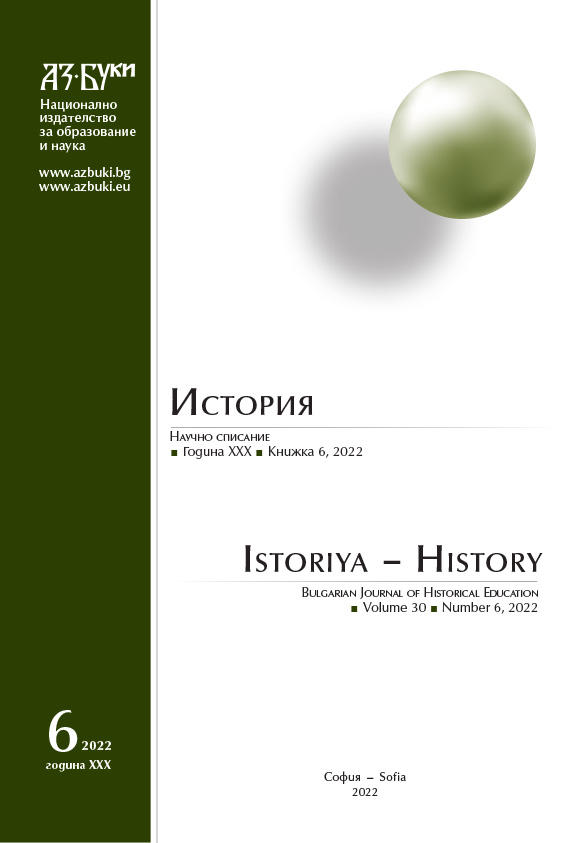
Infrastructure is one of the main parts of football industry in contemporary time. Pitches, stadiums, sporting goods stores, museums of different teams and clubs are very important now. These facilities began to appear in Central-Eastern Europe at the end of the 19th and the beginning of the 20th century. The aim of this research is the comparison of knowledge transfer process about football infrastructure in Kharkiv and Sofia. This article shows participants and ways to disseminate knowledge about football infrastructure, location of football pitches and stadiums in two non-port cities. It also illustrates the importance of local educational institutions and businesses in disseminating such information. More generally, the comparison provides insight into the influence of the administrative status of the city and the level of its industrialization on the speed and the scale of the implementation of knowledge in practice.
More...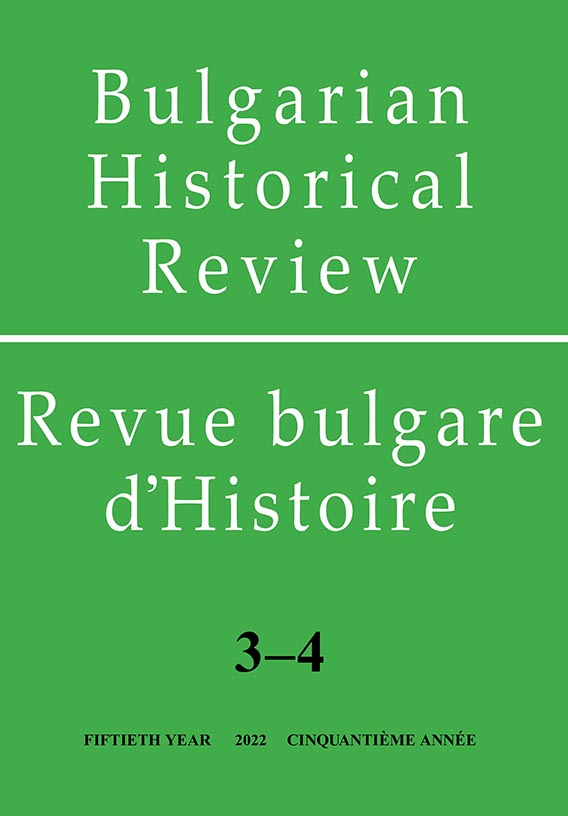
The present article aims to carry an overview how the Bulgar/Protobulgarian tribes seemingly kept changing in the 5th – 7th c. or at least they did in the eyes of the contemporary writers and chroniclers. The text follows the main sources and comments on their information, comparing evidence and drawing conclusions. The first period reviewed is the one immediately after the collapse of Atilla’s state and then the 6th c., when Bulgar troops became well-known as enemies and mercenaries of the big empires of the time – Byzantium, the Steppe empire and Sassanian Iran. It is considered that the Bulgar own political organization kept developing, culminating in the establishment of Old Great Bulgaria. The text contain many references to well-known sources, but also to not so popular or even ones that have not been commented at all in the Bulgarian historical tradition as the poem by pre-Islamic poet Al-Asha. Cases like the “Bookolobras affair” from the late 6th c. have been reviewed and connected to early Bulgarian history. The general conclusion is that the Bulgar ethnonym had ethnic but also strong political dimension from its very first appearance until the founding of Danube Bulgaria and the changing political situation also brought significant ethnic changes, described by key scholars as “Second Bulgarian ethnogenesis”.
More...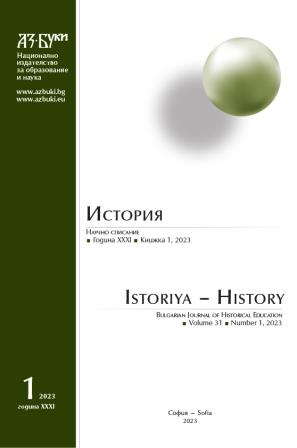
The present study reveals the activities of the Austrian vice-consulatein Rousse along the Danubian coastline in the wake of the Hungarian Revolution(1848 – 1849). The Austrian vice-consul in the city, Emmanuel von Rössler, developed diligent intelligence and public service activities in Rousse, Vidin and Shumen, with which he privileged Habsburg loyalists and hindered the activity of separatist defectors in the Ottoman Empire. In the spirit of “new” diplomatic history, the contribution pays particular attention to the relationship between thevice-consul and the many disaffected soldiers and emigrants who relied on his instructions and resources in the tense political situation after the revolutionary1848. Also, the article rethinks the place of consular institutions in the world of international relations through the lens of transnational history, emphasizing their relative independence and presenting a more accurate picture of the active interactions between different consular missions and units. Last but not least, the study uses the methodology of “entangled” history to rethink the role of local events in the Ottoman lands between Stara Planina and the Danube in the context of the global Age of Revolutions, analyzing the processes in this region as an integral part of revolutionary and counter-revolutionary dynamics in the middle of the “long” XIX century.
More...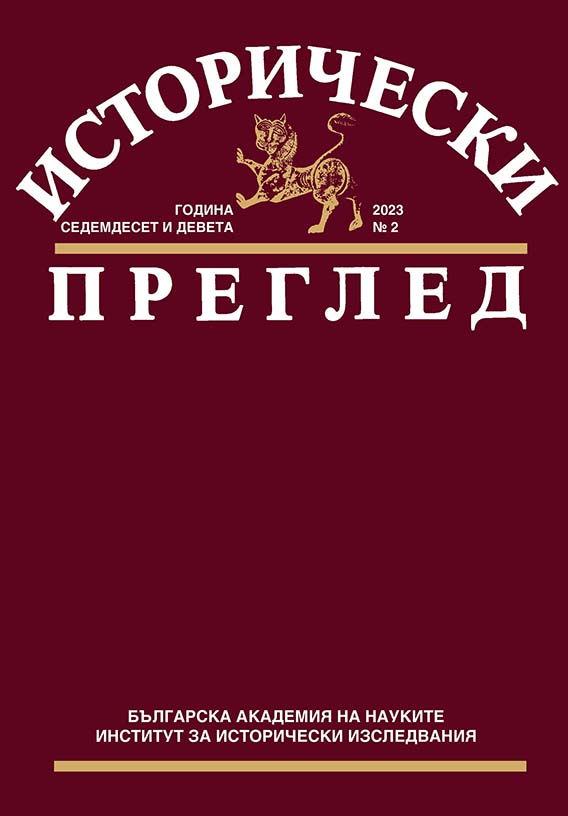
The formation of the Bulgarian parliamentary system started in the fall of 1879 when the first elections for the country’s legislative body were held. Expectations for the young administration were not high however it, although already deprived of the tutelage of the Russian occupation authorities, not only managed to create conditions, to carry out the preparatory actions and hold the vote, but did it in the two consecutive Sundays provided for in the law. The local and central government bodies drew up the constituencies, created the electoral lists and included in them the people with passive and active suffrage, provided them with access to the polling stations and with a relatively honest and effective management of the electoral process. With problems and difficulties, the vote was held everywhere and there was no election in only one constituency. The first parliament did not vote a single law, it only succeeded in confirming its composition, passed a vote of no confidence in the government and initiated several political practices.
More...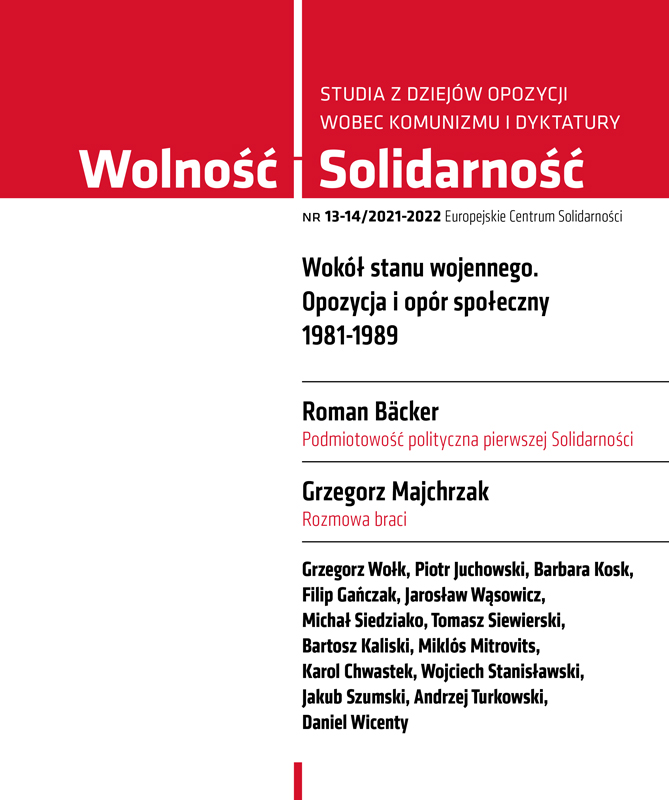
The political subjectivity of the first “Solidarity” evolved significantly in the period between the strikes in the summer of 1980 and the martial law announced on December 13, 1981. At the articulation level, there was transition from the supplication stage through aggregated postulates to the mature political program of nation. Occupation strikes became the basis for the Polish nation’s lasting potential of the self-organization. However, the level of organizational multidimensionality was not achieved. The mobilization potential grew from July 1980 until the general warning strike, and then began to systematically decline. The signing of the agreements meant written acceptance of the existence of separate social entity by the former monopolist (ruling party). It was to obtain collective status benefits. This formal recognition was not unconditional and was finally denied by the imposition of martial law. Significant part of the working, student and agricultural circles achieved the level of political subjectivity at the basic level.
More...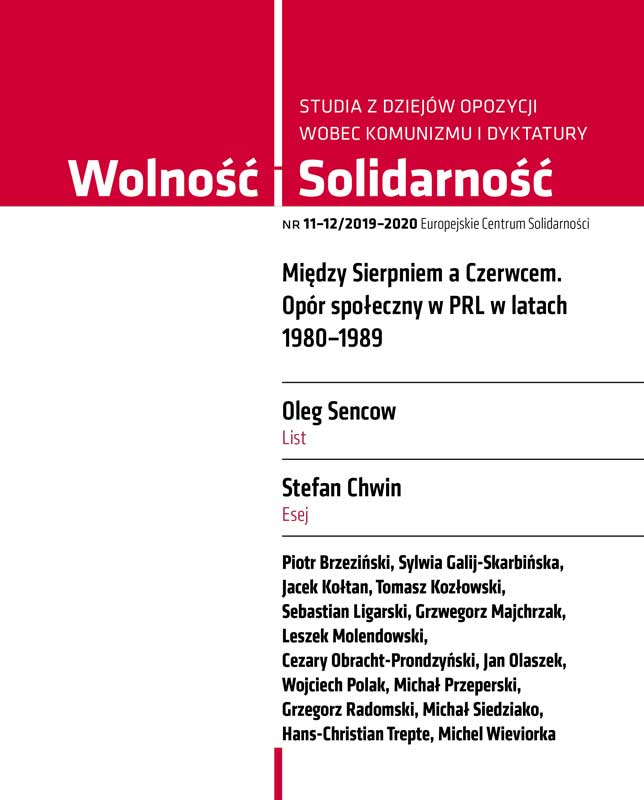
Literary debates on Central Europe often concern the problems of the democratic breakthrough in the former Eastern bloc. Central Europe is also a common cultural and literary heritage; however, it must be shown how literary visions resonated in specific discussions and literary works in various countries before and after the democratic transformation of 1989/1990. Revolutionary events in Poland resulted in the “Autumn of Nations”, and the expectations of readers and critics for a suitable novel about the breakthrough and transformation process were high.
More...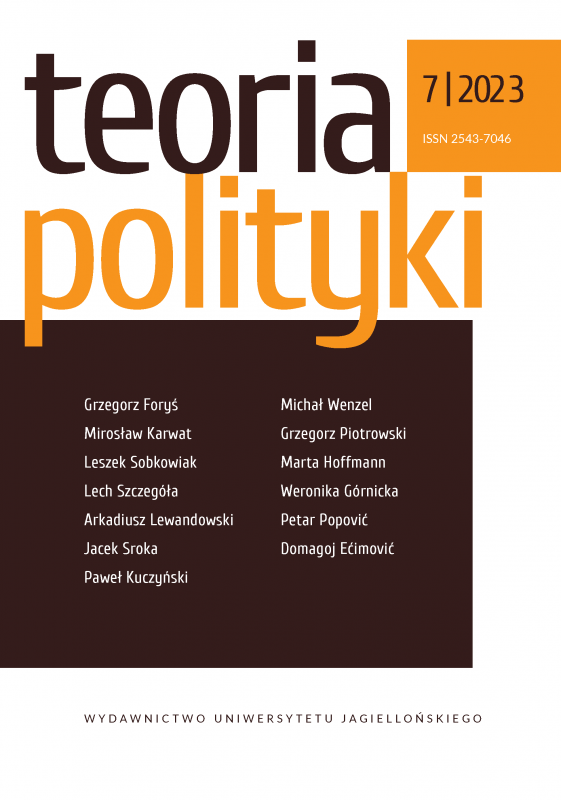
The term “rural social movements” is used in different meanings, so a consistent definition is needed to conceptualize political rural social movements. They are a remnant of the agrarian socio-economic structure. The late and incomplete industrial revolution in Central and Eastern Europe and the incomplete collectivization of agriculture in Poland, compared to other countries of the region, preserved some pre-modern forms of mobilization. The aim of this article is to present the concept of rural social movements and to illustrate it with examples: they are the politics of protest, carried out by Samoobrona and Agrounia. Rural social movements are contrasted with both traditional (old) movements and new social movements. They are located on the sidelines of the main socio-political cleavages, and their actors contest the elites en bloc.
More...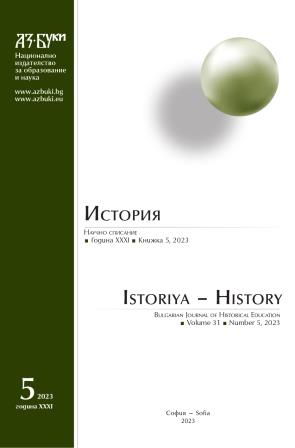
This article examines the brief history of the Serbian consulate in Serres in 1897–1899 as a failed attempt at state-building. Drawing on evidence from recently published materials by the Serbian State Archives, the article argues that the Serbian consuls in Serres, Branislav Nušić and Sima Avramović, played an important role in the efforts to promote Serbian national identity and defend Serbian political interests in Ottoman Macedonia. The consulate in Serres was part of an expanding Serbian diplomatic network in Macedonia, which proved instrumental to other Serbian initiatives, such as the creation of new schools and the appointment of Serbian priests in the region. The Serbian consular activities in Serres formed an aspect of a wide-ranging transnational strategy of deploying consulates across Macedonia in the wake of the Serbian-Bulgarian War of 1885. Such institutions served to advance national interests and protect national subjects outside the borders of the fledgling Balkan states. Reviewing recent scholarship on Romania, Bulgaria, and Greece, the article concludes by comparing the Serbian example to those of other Balkan nations and suggesting further venues for comparative and entangled historical research.
More...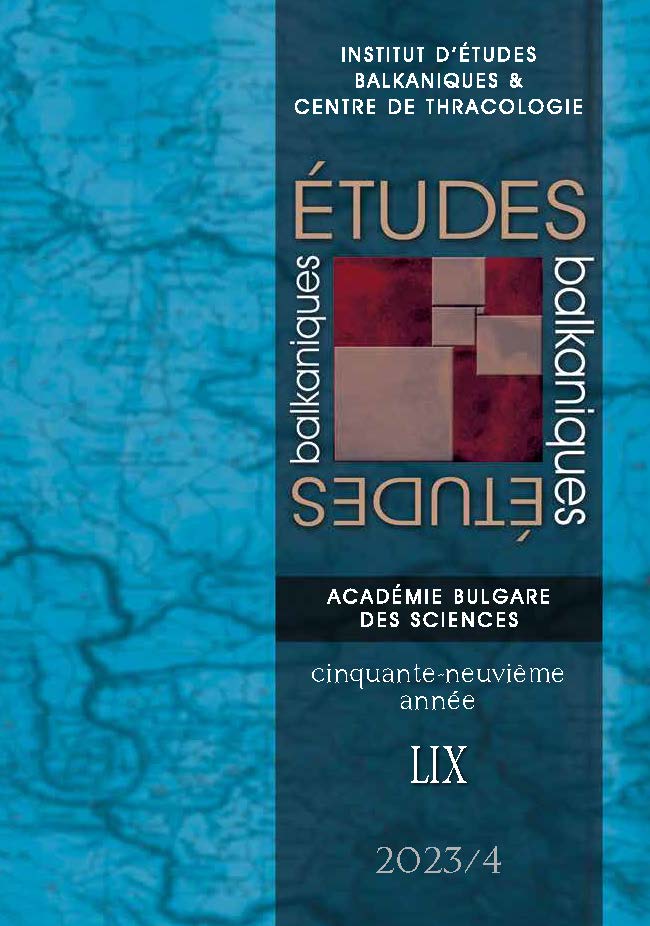
In order to better envisage the penetration of French language and culture in Wallachia and Moldavia, a phenomenon that marked Romanian society’s entry into modernity from the early 18th century until the first decades of the 19th century, one should refer to the cultural impact of the Phanariotes’ reigns in the Romanian Principalities. The Francophonie of these Greek noblemen from Constantinople, who acted as dragomans and councilors of the sultan (allowing them, in turn, to be named reigning princes in Bucharest and Jassy), quickly became a model to the entirety of the Moldo-Wallachian high society. During their reigns, the educational institutions from the two capitals already taught French in their programs. Readings and translations from French authors increased in number, as French became not only the language of culture, but also the language of diplomacy. In the early 19th century, the Francophonie of the upper classes acted as a linguistic passport in the long process of their Europeanisation and, consequently, it facilitated the modernization of the Romanian society in its entirety.
More...